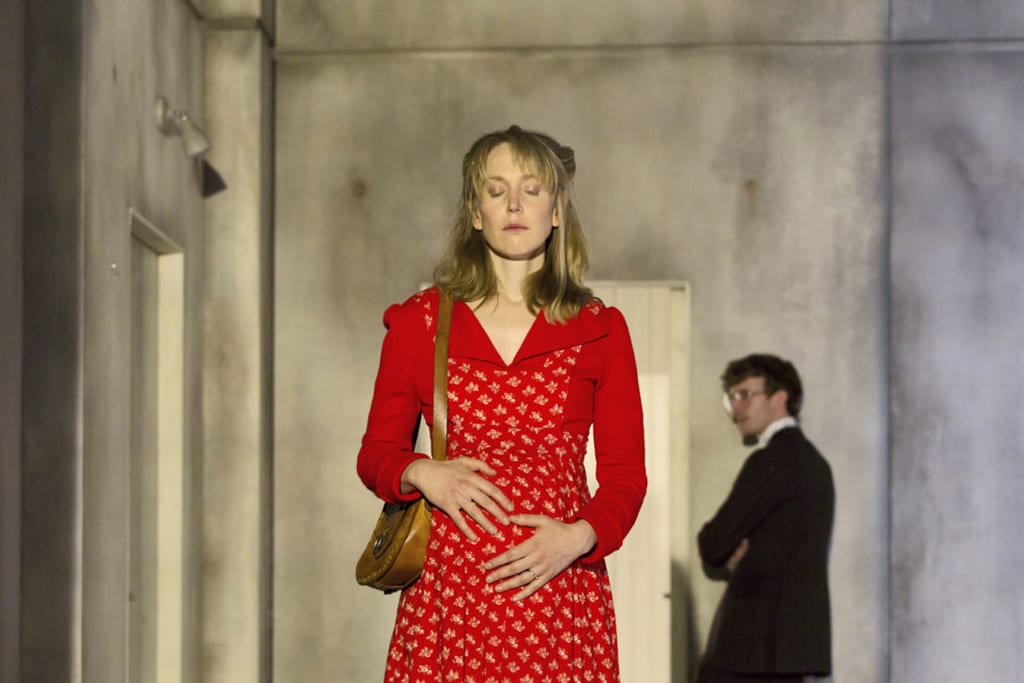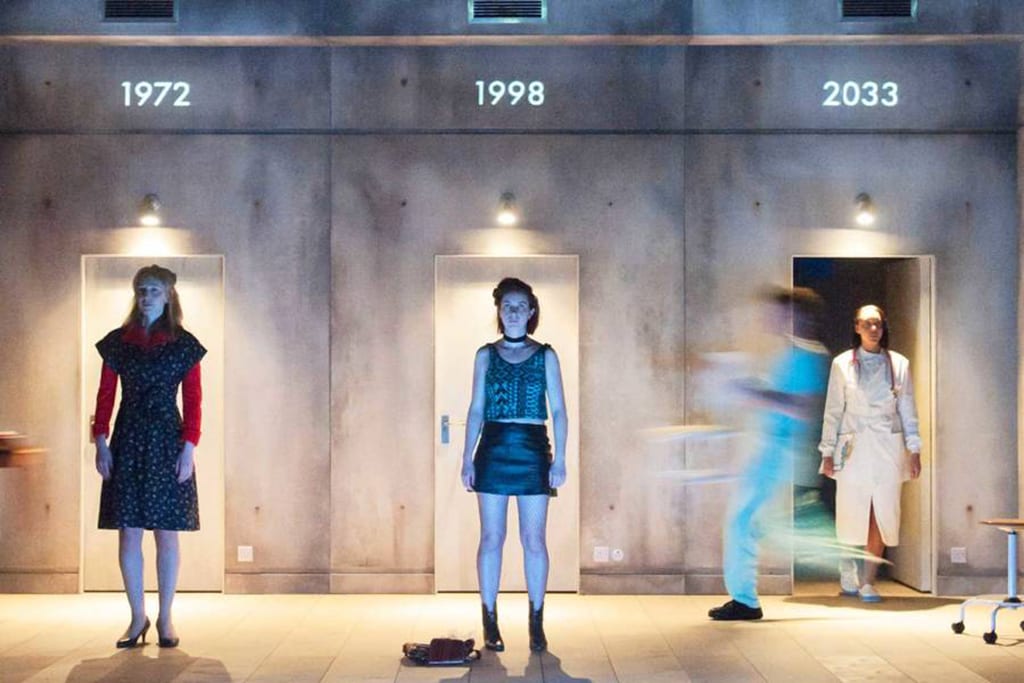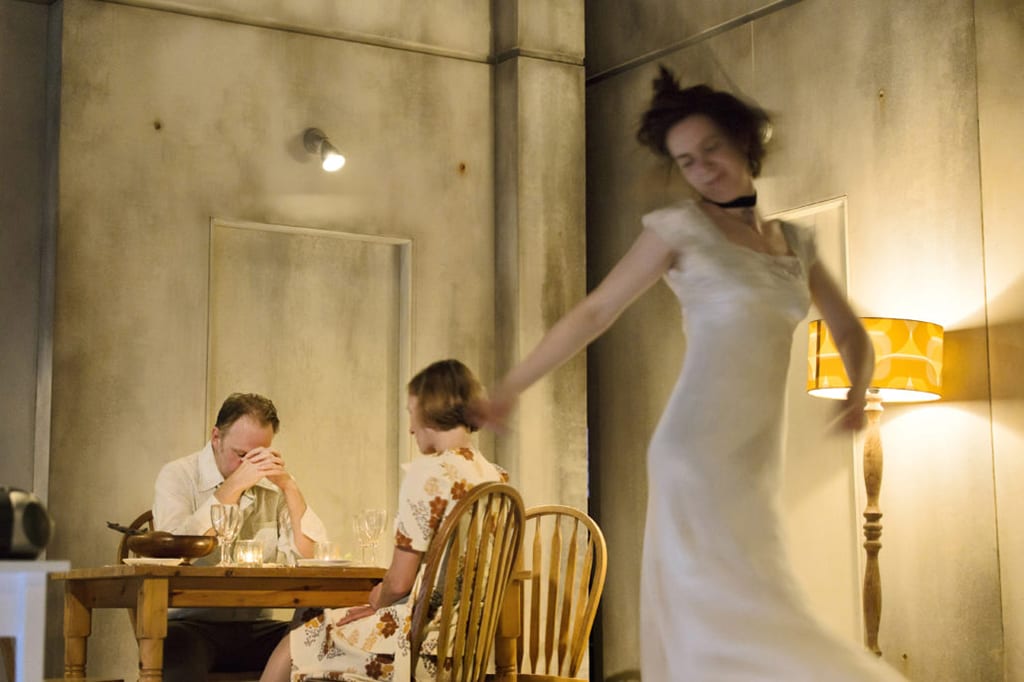Anatomy of a Suicide follows the success of Alice Birch’s recent collaboration with Katie Mitchell on the brilliant Ophelias Zimmer: a reimagining of the events in Shakespeare’s play leading up to Ophelia’s decision to drown herself.
As the title of this play suggests, it tackles a similar theme – and yet it’s a very different experience. It’s a play of epic proportions: a triptych that simultaneously tells the story of three generations of women (one beginning in the 70s; another in the late 90s; and the third in the 2030s). It reflects on the long-term impact of the grandmother Carol’s suicide: suggesting that there’s a link between this and her daughter Anna’s drug addiction and eventual suicide, together with her granddaughter Bonnie’s fears of intimacy and her desire to be clinically sterilised.
Along the way a clear indication is given of the potentially devastating long-term ramifications of the restrictive gender norms that can lead to (or at the very least exacerbate) female depression, especially when combined with institutional failures (e.g. subjecting both Carol and Anna to electroconvulsive therapy). Birch’s play is a powerful and troubling depiction of successive struggles and failures when it comes to understanding and coping with issues relating to women and mental health.
In order to tell a story spanning generations, Birch splits the stage in three so that the narratives unravel concurrently – resulting in frequent thematic and narrative overlaying. Split-staging is hardly a novel device, but I’m not sure I can recall a play in which its been used continuously, or as effectively as this (though I can think of some films that do compare – Mike Figgis’s Timecode for example…). Juxtaposing these three environments encourages us to see differences and similarities between these stories on a personal and a political level: deeply enriching the audience’s experience of the play.
Mitchell’s production, designed by Alex Eales, is pretty faultless. It’s pared back and actor focussed, but with effective tension building achieved through subtle movement sequences and by Paul Clark and Melanie Wilson’s haunting score.
Hattie Morahan as Carol, Kate O’Flynn as Anna and Adelle Leonce as Bonnie are all excellent. It’s worth seeing this play just for them: following Kate O’Flynn’s performance in The Glass Menagerie (West End), Adelle Leonce taking the lead in Torn (also at the Court) and Hattie Morahan in The Doll’s House (Young Vic) – all highly acclaimed productions – these are three actors at the top of their game delivering some electric performances.
Anatomy of a Suicide is a tour de force: a brave and innovative piece of writing, diligently realised by perhaps the UK’s leading director, and with some truly stellar performances. With Birch recently having written the screenplay for the excellent Lady Macbeth, here’s hoping she’ll continue to write for the theatre and that she’ll bring us more equally thoughtful and challenging work.





